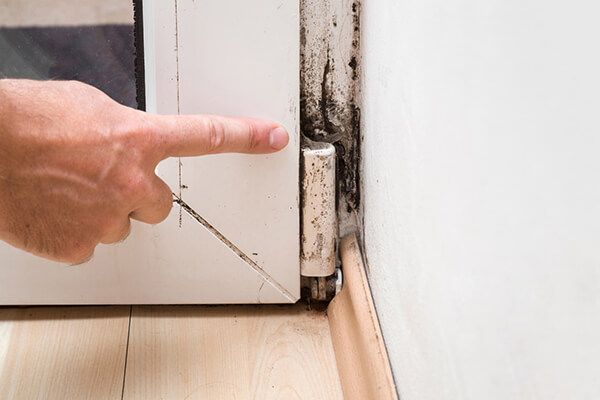Locating Post Remediation Inspection Near Me Providers
Locating Post Remediation Inspection Near Me Providers
Blog Article
Expert Tips for Message Mold Removal Success
In the realm of mold removal, successfully eradicating mold and mildew is just half the battle; the real challenge exists in avoiding its reappearance. Post-remediation efforts play an important role in guaranteeing a mold-free setting in the long term. By adhering to professional suggestions and finest practices, people can protect their spaces against mold revival and keep a healthy and balanced indoor atmosphere. It is in this stage of the remediation process that focus to detail and proactive steps really make a difference.
Display Moisture Degrees Routinely
After finishing mold removal procedures, preserving ideal moisture degrees is critical to avoid mold re-growth and make certain a healthy interior environment. High moisture degrees over 60% create a favorable setting for mold to flourish, making routine keeping track of an aggressive procedure to prevent any type of future mold and mildew issues.
Additionally, developing a regular schedule for moisture checks, specifically in high-risk areas such as basements, restrooms, and cooking areas, is an aggressive strategy to mold prevention. By regularly checking humidity levels, building proprietors can efficiently reduce the danger of mold reoccurrence and preserve a healthy interior environment post-remediation.
Conduct Thorough Inspections Post-Remediation
Adhering to the conclusion of mold removal procedures, it is necessary to carry out comprehensive assessments to confirm the effectiveness of the removal process. These post-remediation inspections are crucial in guaranteeing that the mold issue has been efficiently attended to which there is no recurrence or staying mold and mildew growth. Assessments should be brought out by certified specialists who have expertise in determining mold and mildew and assessing indoor air high quality.
Throughout these inspections, numerous methods such as aesthetic analyses, air tasting, and surface area sampling might be used to thoroughly examine the remediated locations. Aesthetic analyses involve a comprehensive examination of the properties to look for any visible signs of mold growth or water damage. Air sampling helps in identifying the airborne mold and mildew spore levels, while surface tasting can detect mold bits on surface areas.
Implement Proper Air Flow Methods
After making sure the effectiveness of the mold remediation process with detailed assessments, the next essential step is to concentrate on implementing appropriate air flow techniques. Ample ventilation is necessary in avoiding mold and mildew reoccurrence by controlling wetness degrees and promoting air flow.
Correct ventilation not only help in preventing mold development but likewise adds to the overall health and wellness and convenience of occupants. By making certain sufficient air flow throughout the building, you can decrease the danger of mold and mildew regrowth and develop a healthier living atmosphere. Routine upkeep of air flow systems, consisting of cleansing and filter substitutes, is essential to sustaining efficient ventilation. Consulting with a/c specialists can give further insights into optimizing ventilation techniques for your particular building demands.

Use Mold-Resistant Materials for Repairs
To boost the long-lasting efficiency of mold and mildew removal efforts, including mold-resistant products for fixings is vital in alleviating the danger of future mold and mildew growth. Mold-resistant materials go to these guys are created to endure moisture and prevent mold growth, making them a necessary choice for locations prone to wetness and humidity. When fixing locations impacted by mold and mildew, using products such as mold-resistant drywall, mold-resistant paints, and mold-resistant caulking can aid avoid mold and mildew reoccurrence.
Mold-resistant drywall is a superb choice to standard drywall in locations like basements and shower rooms where dampness degrees are greater. When subjected to damp conditions, this kind of drywall has a special covering that withstands mold and mildew growth even. Additionally, utilizing mold-resistant paints consisting of antimicrobial representatives can better hinder mold and mildew development on ceilings and wall surfaces.
In locations where dampness is usual, such as restrooms and kitchen areas, utilizing mold-resistant caulking around bathtubs, windows, and sinks can help secure out water and protect against mold and mildew from taking hold in fractures and crevices. By investing in these mold-resistant products throughout repair services post-remediation, you can dramatically lower the probability of future mold and mildew problems and maintain a healthier interior atmosphere.
Maintain Tidiness and Address Water Issues
After mold and mildew removal, it is crucial to maintain a tidy setting to protect against the regrowth of mold. Leakages, water breach, or high humidity degrees can produce the perfect breeding remove mold on grout ground for mold and mildew, so it is imperative to deal with any water-related problems promptly.
To preserve cleanliness, take into consideration using HEPA filters in vacuum cleaners and air cleansers to catch mold spores and stop their flow in the air. Additionally, making certain appropriate air flow in locations vulnerable to moisture build-up, such as kitchen areas and shower rooms, can assist keep humidity levels in check. By remaining attentive concerning sanitation and dealing with water issues without delay, you can effectively protect against mold and mildew reinfestation and keep a healthy and balanced interior environment.
Final Thought

In the realm of mold remediation, efficiently removing mold and mildew is just half the battle; the real obstacle Get the facts exists in stopping its reappearance. After finishing mold removal procedures, preserving optimal moisture degrees is essential to stop mold and mildew re-growth and ensure a healthy indoor environment. High humidity degrees above 60% develop a helpful setting for mold and mildew to prosper, making regular keeping an eye on a proactive measure to avoid any type of future mold issues.
To boost the long-term efficiency of mold removal efforts, incorporating mold-resistant materials for repairs is critical in minimizing the danger of future mold development. After mold and mildew remediation, it is vital to maintain a clean atmosphere to stop the regrowth of mold and mildew.
Report this page